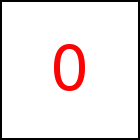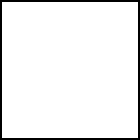clip Library Method
Short Description: Select / Clip-To Rectangular Part
Signature: t.clip (x,y,w,h) or (l,b)
Group: Shape
Class: transition Class
In most cases, clip is used to animate a
rectangular part of the (image of the) element associated with
the transition. (x,y) denote the coordinates of the top
left corner of the part, w gives the width and h the
height.
Examples
var a=taccgl.actor("testimg"); a.clip (a.x0,a.y0,a.wx0/2,a.hy0).start(); | RUN |
var a=taccgl.actor("testimg"); a.clip (a.x0+a.wx0/4,a.y0,a.wx0/2,a.hy0).rotateMiddle(1,0,0).start(); | RUN |
var a=taccgl.actor("testimg"); a.clip (a.x0,a.y0,a.wx0/2,a.hy0).rotateMiddle(1,0,0).start(); var b=taccgl.a("testimg"); b.clip (b.x0+b.wx0/2,b.y0,b.wx0/2,b.hy0).rotateMiddle(1,0,0) .rotatePart(Math.PI*6,Math.PI*2).start(); | RUN |
Sample HTML Element
containing some text.
There is, however, no restriction that reqires the rectangular
part to be really completely contained inside the element.
In fact (x,y,w,h) can denote any part of the texture canvas
and it is the users responsibility to fill it as needed.
In the second form l and b must be Position Specifications
and l denotes the top left and b the bottom right corner.
taccgl.actor("htmlel").clip ({ox:11, oy:11}, 300, 200) . dur(3). start(); | RUN |
taccgl.actor("htmlel").clip ({}, {rx:0.5,ry:1}) . dur(3). start(); | RUN |
taccgl.actor("htmlel").clip ({}, {rx:0.5,ry:1}) . dur(3). start(); taccgl.actor("htmlel").clip ({rx:0.5}, {rx:1,ry:1}) . rotate ({rx:0},0,1,0) . rotatePart(0,-Math.PI) . dur(3). start(); | RUN |
clip must be used before most of the other
methods, before any of hV,
wV, dV, before any of the motion methods
and before any of the texture methods.
For non-rectangular parts use clipT or clipR.
For triangles, creates right triangles while clipT or clipR
create arbitrary triangles.
|







